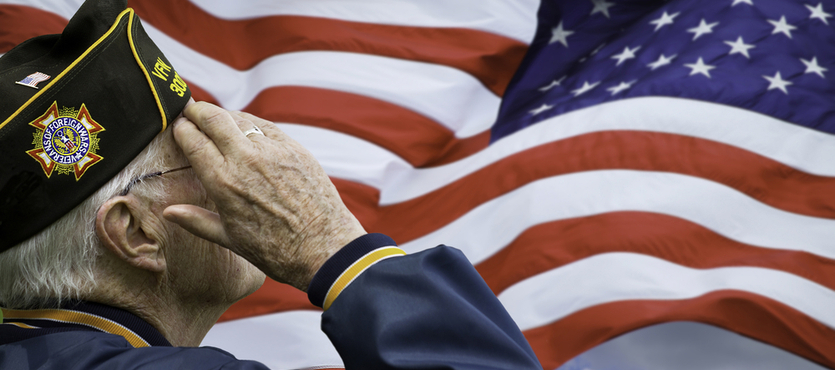During an appearance on Capitol Hill, injured veterans told Congress they would push hard for toxic exposure compensation during 2020.
Many Gulf War and War on Terror veterans are worried about inaction over long-term health problems, mostly because of what Agent Orange veterans had to endure. So, groups are speaking out. Disabled American Veterans National Commander Stephen Whitehead bemoaned the fact that “too many veterans, particularly Vietnam veterans, [are] waiting for their toxic exposure to be recognized.” VFW Commander in Chief William “Doc” Schmitz echoed those sentiments, as did Wounded Warrior Project CEO Michael Linnington. 90% of the wounded veterans he comes into contact with were toxic exposure victims, he added.
“The work is far from over,” vowed CEO of Iraq and Afghanistan Veterans of America Jeremy Butler. “In 2020 we will continue to drive support to those who suffer injuries from burn pits and other toxic exposures.”
Agent Orange
From about 1960 to 1970, the military sprayed hundreds of gallons of this poison on the jungles of Vietnam. For some reason, leaders did not think that the same chemical that instantly killed plants might also be harmful to humans, but that is the subject of another blog.
Veterans fought for many years to obtain compensation for Agent Orange exposure injuries. Yet the VA consistently refused to provide benefits. Finally, when faced with a massive lawsuit, the VA grudgingly agreed to pay limited benefits. That cause and effect shows how effective legal action can be when bureaucrats refuse to act, but that is also the subject of another blog.
Recently, the government has expanded Agent Orange benefits. Now, most veterans who served in the Vietnam theater in the 1960s, as well as stateside veterans who were at military facilities which handled Agent Orange, are eligible for benefits.
Very few private military contractors were in Vietnam. The General Accounting Office did not change its narrow interpretation of the Anti-Pinkerton Act. This 1896 law forbade governments from hiring paramilitary groups. Until 1978, the GAO included private military contractors in this category. So, during the Vietnam War, there were some contractors in-country, but not very many.
Technically, the Defense Base Act gives victims two years to file injury claims. Yet in the case of occupational diseases, like toxic exposure, the law expands this window. Victims need not file claims until they know the full extent of their injuries and they connect those injuries with their service as private military contractors.
Black Ooze
“Black Ooze” sounds like something from a 1970s 3-D horror movie. Are we the only ones who remember those flimsy two-tone colored glasses made from cardboard and plastic wrap?
The substance is real, and so are the illnesses it causes. During the early days of the Global War on Terror, Karshi-Khanabad (K2), a military base in Uzbekistan, was an important staging area for the invasion of Afghanistan. A number of contractors and servicemembers told friends and loved ones that black gunk seeped up through the floorboards. A short time later, many of these individuals became seriously ill, with conditions like brain cancer.
A subsequent investigation revealed that the area in and around K2, which was also patriotically called Camp Stronghold Freedom, was heavily polluted with solvents, fuel, depleted uranium, missile propellant, and other toxic substances. This stuff emptied into ponds called Skittles, because of their other-wordly greenish hue. When these substances leaked into the ground, they bubbled up as black goo.
About 7,000 people were stationed at K2 between 2001 and 2005. The Army has refused to survey these victims, most likely because officials are afraid of what they might discover.
Black ooze exposure illustrates another important point about the Defense Base Act. Frequently, contractors serve at multiple locations during their deployments. Even if you were just passing through a place like K2, you might have been exposed to a toxic substance. If an attorney establishes any connection between your deployment and your illness, you may be entitled to DBA benefits.
Burn Pits
As far as contractors are concerned, Agent Orange and black ooze exposure pales in comparison to burn pit exposure. During the Afghanistan and Iraq Wars, the sudden troop buildup and unexpectedly long stays created logistical problems. Waste disposal, which no one thought much about, became a major issue.
DoD regulations allow combat troops to use burn pits as temporary waste disposal devices. Essentially, contractors (mostly KBR contractors in this case) dig a huge pit in the ground. All waste gets dumped into that open-air pit. Then, contractors douse the contents with jet fuel and set them ablaze. Since military bases generate huge amounts of waste, these fires burn 24/7/365. The thick, black smoke contains heavy metals and other toxic substances.
As it did with Agent Orange a generation ago, the VA denies there is a link between burn pits and cancer or respiratory diseases. However, the Department of Labor, which administers the DBA, has taken a different stance. In a 2018 decision, a DOL Administrative Law Judge ruled that burn pits were responsible for Deployment-Related Lung Disease. Attorneys can use the burn pit-DRLD link to obtain DBA benefits for injured contractors, despite the VA’s denials.
Compensation Available
The brain cancer survival rate has increased significantly since the 1990s. But the effective treatments are also quite expensive. In some cases, these costs can be $30,000 a month. That is 10 times as high as a decade ago.
The Defense Base Act takes care of medical bills, so injured victims can concentrate on getting better. Medical bill payment includes:
- Initial onsite emergency care,
- Follow-up care at a large facility,
- Physical or occupational therapy, and
- Related expenses, like transportation costs and medical devices.
Generally, the DBA insurance company pays these expenses directly. So, most victims never see a bill. Victims are not financially responsible for any unpaid costs.
For more information about the lost wages available under the Defense Base Act, contact Barnett, Lerner, Karsen, Frankel & Castro, P.A.

